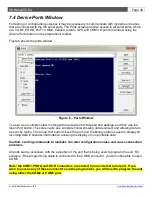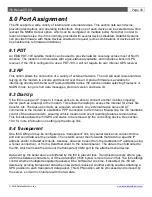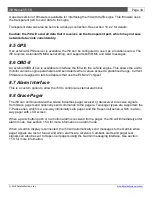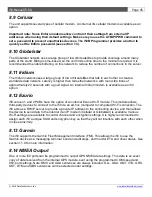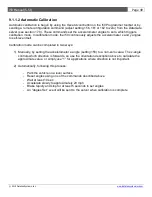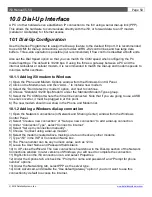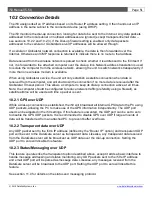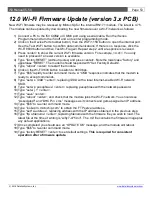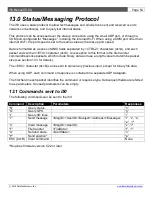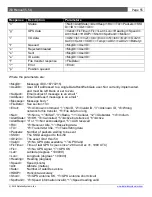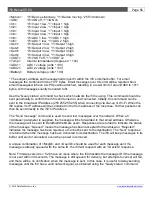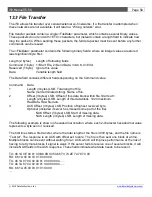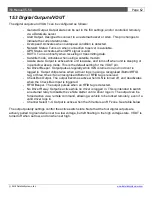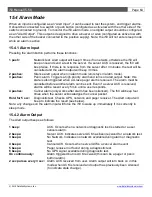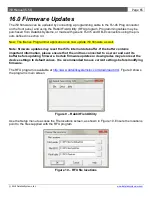
i50 Manual (5.51)
Page 51
© 2018 Datalink Systems, Inc.
www.datalinksystemsinc.com
10.2 Connection Details
The i50 assigns itself an IP address based on its Router IP address setting. It then hands out an IP
address in the same subnet to the connected device (using DHCP).
The i50 monitors the dial-up connection, looking for data to be sent to the Internet. Any data packets
addressed to the local subnet or multicast addresses are ignored (except transparent/email data
–
see sections 10.2.2 and 10.2.3). If the Dial-up firewall setting is enabled, only data packets
addressed to the cellular or Globalstar server IP addresses will be allowed through.
If a cellular or Globalstar network connection is available, the data is then forwarded over the
Internet. Otherwise an ICMP response is returned to indicate there is no route to that address.
Data received from the wireless network is parsed to check whether it is addressed to the i50 itself. If
not, it is forwarded to the attached computer over the dial-up link. Network address translation is used
to isolate the computer from the wireless network, allowing the unit to switch networks transparently if
more than one wireless modem is available.
When using Globalstar service, the unit will only establish a satellite connection when data is
received from the computer, and will shut down the connection if no more data is received after the
Globalstar Timeout period. This allows a computer to keep its dial-up connection active at all times.
Note: the computer should be configured to reduce network traffic (preferably using a firewall), as
satellite airtime will be used each time a packet is sent.
10.2.1 GPS over UDP
Whi
le a dial-up connection is established, the i50 will broadcast all internal GPS data to the PC using
UDP packets, allowing the PC to make use of the GPS information independently. The UDP port
used can be adjusted in the i50 settings. If this feature is unwanted, the UDP port can be set to zero
to disable the GPS UDP packets. It is recommended to disable GPS over UDP if large amounts of
data will be transferred from an attached PC, to prevent buffer overflows.
10.2.2 Transparent data over UDP
Any UDP packet sent to the i50’s IP address (defined by the “Router IP” option) and transparent UDP
port will be sent to the DataGate server as transparent data. Likewise, any transparent data received
from the DataGate server will be broadcast as UDP data over the dial-up connection. Setting the
UDP port to zero will disable this feature.
10.2.3 Status/Messaging over UDP
This feature operates like the transparent option described above, except it adds a basic interface to
handle message addressing and status monitoring.
Any UDP packets sent to the i50’s IP address
and email UDP port will be parsed as message data. Likewise, any messages received from the
DataGate server will be broadcast to the UDP port. Setting the UDP port to zero will disable this
feature.
See section 11.0 for details on the status and messaging protocol.




